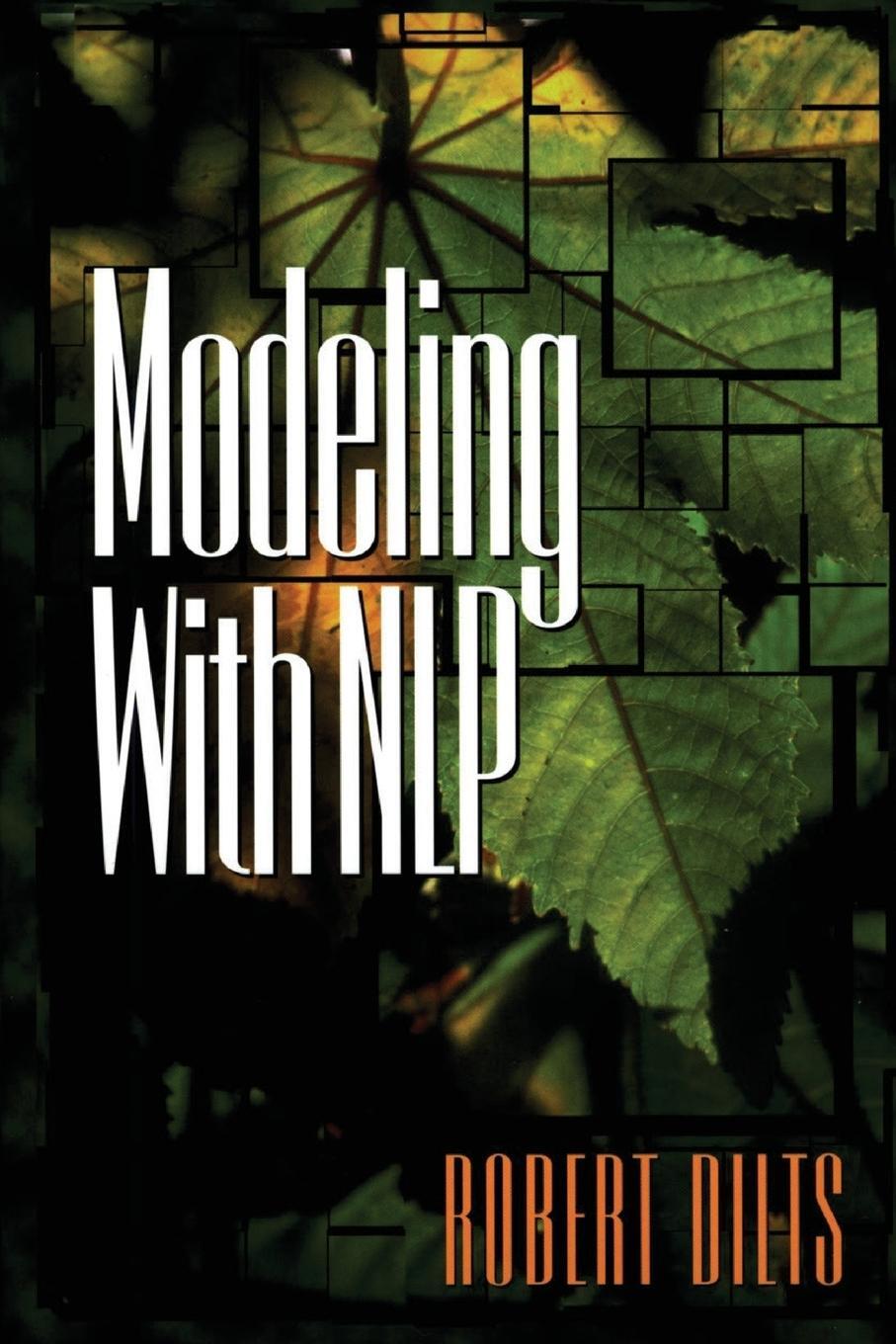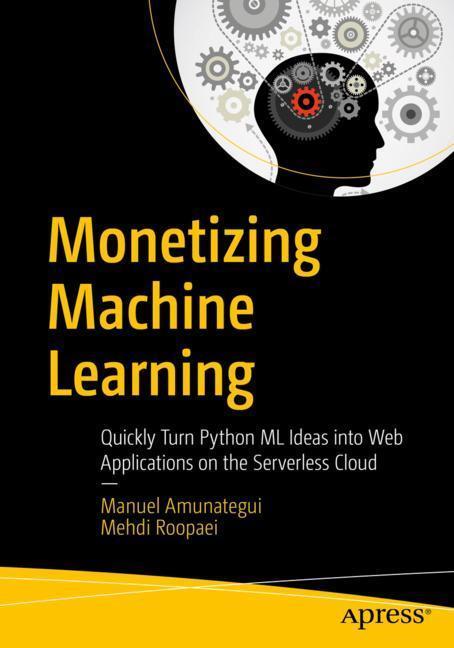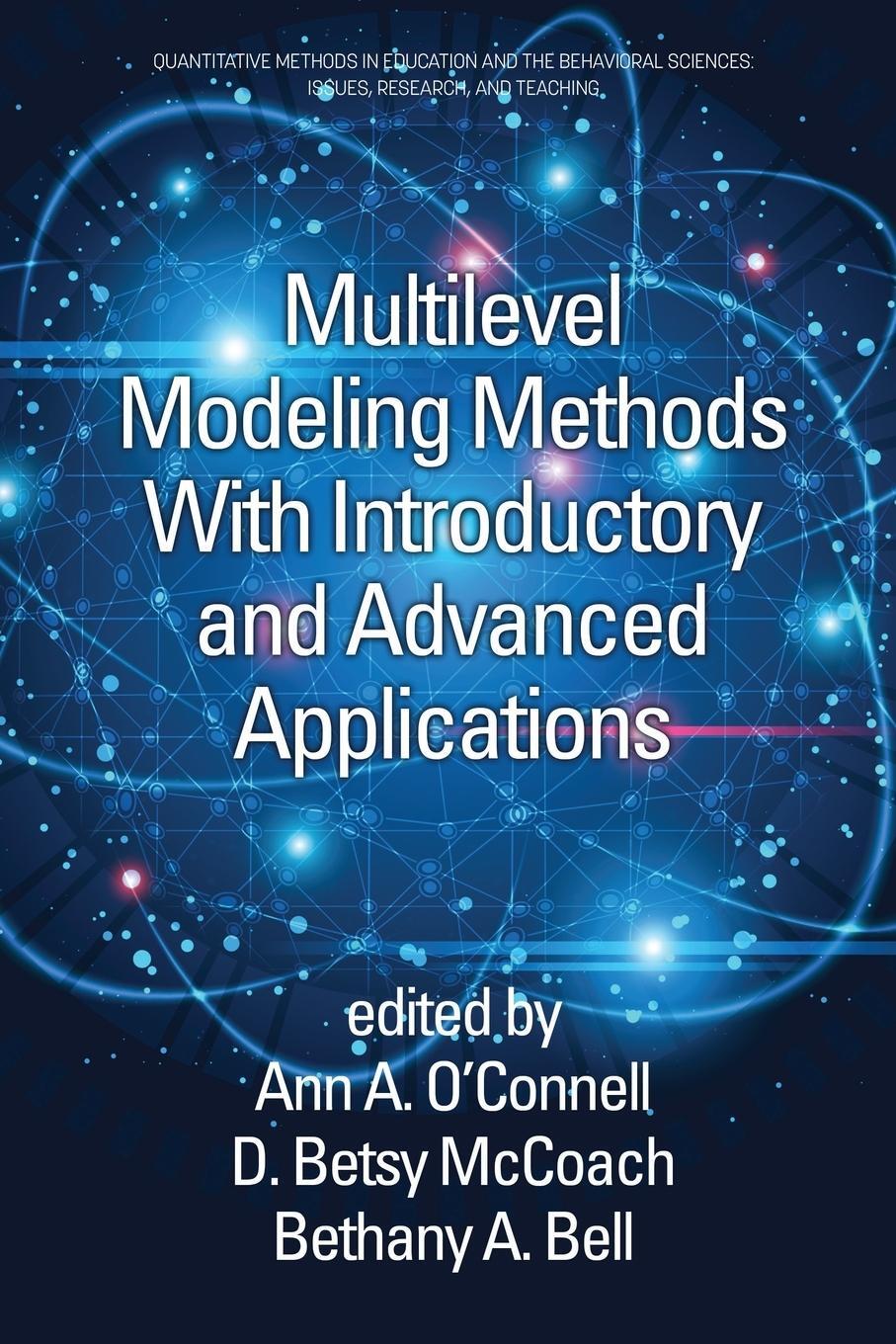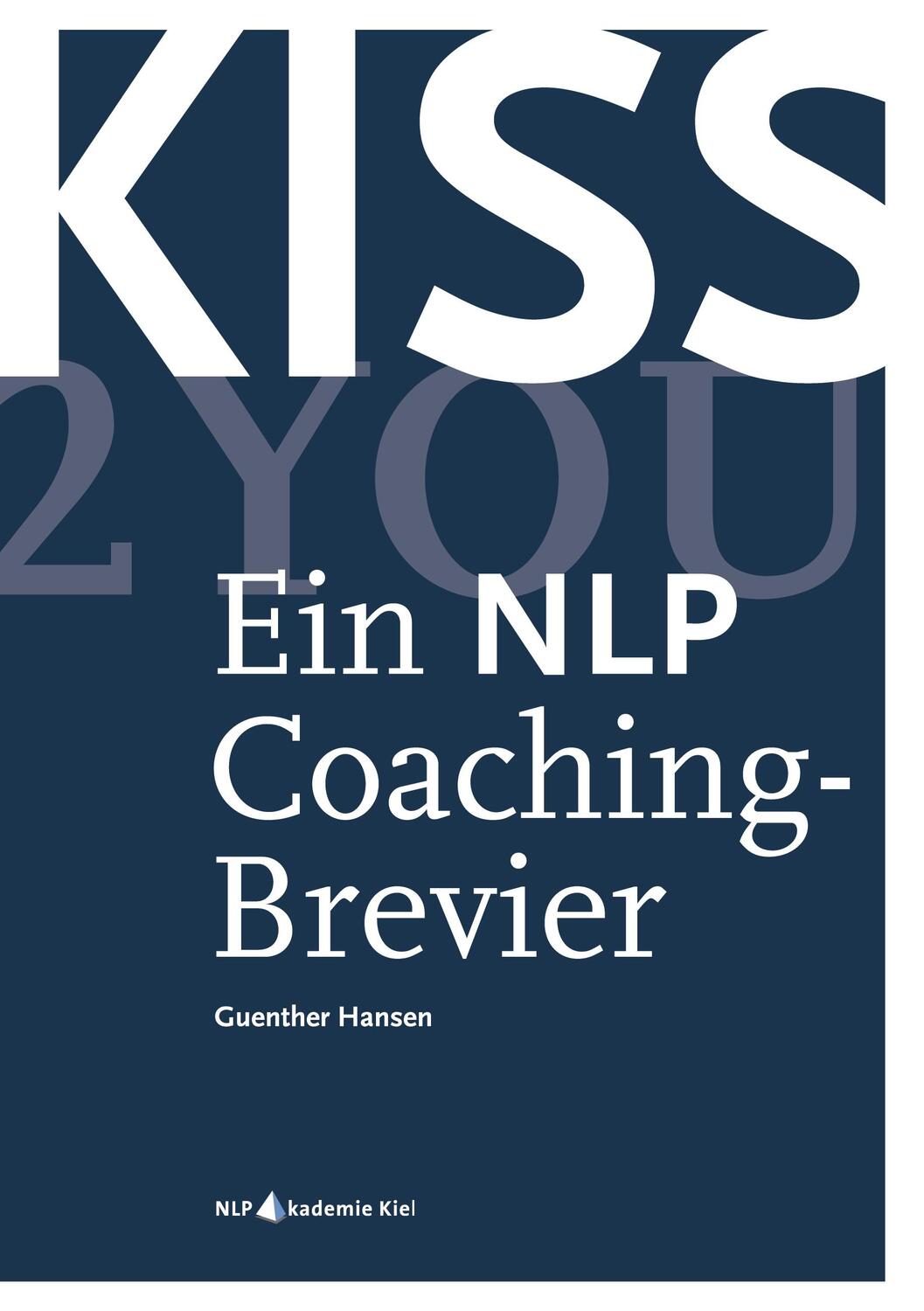Dekorationsartikel gehören nicht zum Leistungsumfang.
Sprache:
Englisch
29,95 €*
Versandkostenfrei per Post / DHL
Lieferzeit 4-7 Werktage
Kategorien:
Beschreibung
Thomas Jefferson once said, "If two individuals get together and exchange a dollar, they each walk away with one dollar. If the same individuals get together and exchange an idea, they both walk away with two ideas." In many ways, this statement expresses the vastly generative potential or "economics" of modeling.
Modeling is the process of taking a complex event or phenomenon and breaking it into small enough chunks so that it can be recapitulated or applied in some way. Behavioral modeling involves observing and mapping the successful processes which underlie an exceptional performance of some type. The purpose of behavior modeling is to create a pragmatic map or 'model' of a particular behavior which can be used to reproduce or simulate some aspect of that performance by anyone who is motivated to do so.
The ability to model effectively opens the door to many possibilities that have previously been unavailable to humankind. In addition to providing a methodology which can be used to make ideas more explicit and easier to communicate, modeling can transform the way we view and perceive one another. If we see someone who does something better than ourselves, for example, instead of looking at that person and feeling inadequate, jealous, or suspicious, we can go out and model how they do what they do. Then, we too can have the capability that the other person possesses.
The field of Neuro-Linguistic Programming (NLP) has developed out of the modeling of the behaviors and thinking processes of exceptional people from many fields. NLP modeling procedures involve finding out about the mental strategies ("Neuro") a person is using by analyzing that person's language patterns ("Linguistic") and non-verbal responses. The results of this analysis are then put into step-by-step strategies or procedures ("Programming") that may be used to transfer the skill to other people, and apply it to other contexts. The purpose of NLP modeling is to put what ha with which to identify and describe specific, reproducible patterns in the language and behavior of effective role models. The purpose of NLP modeling is to put what has been observed and described into action in a way that is productive and enriching. In fact, the worldwide success of NLP as a technology for creating and managing change comes from its foundation in the modeling process.
This book is about the NLP modeling process and its applications. The first part of this book is devoted to defining the principles and tools necessary for effective modeling (the "epistemology," methodology and technology of NLP). The second part of the book illustrates the application of NLP modeling procedures to the study of effective leadership. It provides examples of how NLP was applied to identify specific cognitive, linguistic and behavioral skills used by leaders to address challenging situations involving problem solving, delegation and training on the job. The results define the key communication and relational skills employed by effective leaders to achieve practical results in their working reality, in order to "create a world to which people want to belong.
Modeling is the process of taking a complex event or phenomenon and breaking it into small enough chunks so that it can be recapitulated or applied in some way. Behavioral modeling involves observing and mapping the successful processes which underlie an exceptional performance of some type. The purpose of behavior modeling is to create a pragmatic map or 'model' of a particular behavior which can be used to reproduce or simulate some aspect of that performance by anyone who is motivated to do so.
The ability to model effectively opens the door to many possibilities that have previously been unavailable to humankind. In addition to providing a methodology which can be used to make ideas more explicit and easier to communicate, modeling can transform the way we view and perceive one another. If we see someone who does something better than ourselves, for example, instead of looking at that person and feeling inadequate, jealous, or suspicious, we can go out and model how they do what they do. Then, we too can have the capability that the other person possesses.
The field of Neuro-Linguistic Programming (NLP) has developed out of the modeling of the behaviors and thinking processes of exceptional people from many fields. NLP modeling procedures involve finding out about the mental strategies ("Neuro") a person is using by analyzing that person's language patterns ("Linguistic") and non-verbal responses. The results of this analysis are then put into step-by-step strategies or procedures ("Programming") that may be used to transfer the skill to other people, and apply it to other contexts. The purpose of NLP modeling is to put what ha with which to identify and describe specific, reproducible patterns in the language and behavior of effective role models. The purpose of NLP modeling is to put what has been observed and described into action in a way that is productive and enriching. In fact, the worldwide success of NLP as a technology for creating and managing change comes from its foundation in the modeling process.
This book is about the NLP modeling process and its applications. The first part of this book is devoted to defining the principles and tools necessary for effective modeling (the "epistemology," methodology and technology of NLP). The second part of the book illustrates the application of NLP modeling procedures to the study of effective leadership. It provides examples of how NLP was applied to identify specific cognitive, linguistic and behavioral skills used by leaders to address challenging situations involving problem solving, delegation and training on the job. The results define the key communication and relational skills employed by effective leaders to achieve practical results in their working reality, in order to "create a world to which people want to belong.
Thomas Jefferson once said, "If two individuals get together and exchange a dollar, they each walk away with one dollar. If the same individuals get together and exchange an idea, they both walk away with two ideas." In many ways, this statement expresses the vastly generative potential or "economics" of modeling.
Modeling is the process of taking a complex event or phenomenon and breaking it into small enough chunks so that it can be recapitulated or applied in some way. Behavioral modeling involves observing and mapping the successful processes which underlie an exceptional performance of some type. The purpose of behavior modeling is to create a pragmatic map or 'model' of a particular behavior which can be used to reproduce or simulate some aspect of that performance by anyone who is motivated to do so.
The ability to model effectively opens the door to many possibilities that have previously been unavailable to humankind. In addition to providing a methodology which can be used to make ideas more explicit and easier to communicate, modeling can transform the way we view and perceive one another. If we see someone who does something better than ourselves, for example, instead of looking at that person and feeling inadequate, jealous, or suspicious, we can go out and model how they do what they do. Then, we too can have the capability that the other person possesses.
The field of Neuro-Linguistic Programming (NLP) has developed out of the modeling of the behaviors and thinking processes of exceptional people from many fields. NLP modeling procedures involve finding out about the mental strategies ("Neuro") a person is using by analyzing that person's language patterns ("Linguistic") and non-verbal responses. The results of this analysis are then put into step-by-step strategies or procedures ("Programming") that may be used to transfer the skill to other people, and apply it to other contexts. The purpose of NLP modeling is to put what ha with which to identify and describe specific, reproducible patterns in the language and behavior of effective role models. The purpose of NLP modeling is to put what has been observed and described into action in a way that is productive and enriching. In fact, the worldwide success of NLP as a technology for creating and managing change comes from its foundation in the modeling process.
This book is about the NLP modeling process and its applications. The first part of this book is devoted to defining the principles and tools necessary for effective modeling (the "epistemology," methodology and technology of NLP). The second part of the book illustrates the application of NLP modeling procedures to the study of effective leadership. It provides examples of how NLP was applied to identify specific cognitive, linguistic and behavioral skills used by leaders to address challenging situations involving problem solving, delegation and training on the job. The results define the key communication and relational skills employed by effective leaders to achieve practical results in their working reality, in order to "create a world to which people want to belong.
Modeling is the process of taking a complex event or phenomenon and breaking it into small enough chunks so that it can be recapitulated or applied in some way. Behavioral modeling involves observing and mapping the successful processes which underlie an exceptional performance of some type. The purpose of behavior modeling is to create a pragmatic map or 'model' of a particular behavior which can be used to reproduce or simulate some aspect of that performance by anyone who is motivated to do so.
The ability to model effectively opens the door to many possibilities that have previously been unavailable to humankind. In addition to providing a methodology which can be used to make ideas more explicit and easier to communicate, modeling can transform the way we view and perceive one another. If we see someone who does something better than ourselves, for example, instead of looking at that person and feeling inadequate, jealous, or suspicious, we can go out and model how they do what they do. Then, we too can have the capability that the other person possesses.
The field of Neuro-Linguistic Programming (NLP) has developed out of the modeling of the behaviors and thinking processes of exceptional people from many fields. NLP modeling procedures involve finding out about the mental strategies ("Neuro") a person is using by analyzing that person's language patterns ("Linguistic") and non-verbal responses. The results of this analysis are then put into step-by-step strategies or procedures ("Programming") that may be used to transfer the skill to other people, and apply it to other contexts. The purpose of NLP modeling is to put what ha with which to identify and describe specific, reproducible patterns in the language and behavior of effective role models. The purpose of NLP modeling is to put what has been observed and described into action in a way that is productive and enriching. In fact, the worldwide success of NLP as a technology for creating and managing change comes from its foundation in the modeling process.
This book is about the NLP modeling process and its applications. The first part of this book is devoted to defining the principles and tools necessary for effective modeling (the "epistemology," methodology and technology of NLP). The second part of the book illustrates the application of NLP modeling procedures to the study of effective leadership. It provides examples of how NLP was applied to identify specific cognitive, linguistic and behavioral skills used by leaders to address challenging situations involving problem solving, delegation and training on the job. The results define the key communication and relational skills employed by effective leaders to achieve practical results in their working reality, in order to "create a world to which people want to belong.
Über den Autor
Robert B. Dilts has been a developer, author, trainer and consultant in the field of Neuro- Linguistic Programming (NLP)-a model of human behavior, learning and communication- since its creation in 1975. Robert is also co- developer (with his brother John Dilts) of Success Factor Modeling and (with Stephen Gilligan) of the process of Generative Change. A long time student and colleague of both Grinder and Bandler, Mr. Dilts also studied personally with Milton H. Erickson, M.D. and Gregory Bateson.In addition to spearheading the applications of NLP to education, creativity, health, and leadership, his personal contributions to the field of NLP include much of the seminal work on the NLP techniques of Strategies and Belief Sys- tems, and the development of what has become known as Systemic NLP. Some of his techniques and models include: Reimprinting, the Disney Imagineering Strategy, Integration of Conflicting Beliefs, Sleight of Mouth Patterns, The Spell- ing Strategy, The Allergy Technique, Neuro-Logical Levels, The Belief Change Cycle, The SFM Circle of Success and the Six Steps of Generative Coaching (with Stephen Gilligan).Robert has authored or co-authored more than thirty books and fifty articles on a variety of topics relating to personal and professional development includ- ing From Coach to Awakener, NLP II: The Next Generation, Sleight of Mouth and, Generative Coaching and The Hero's Journey: A Voyage of Self Discovery (with Dr. Stephen Gilligan). Robert's recent book series on Success Factor Modeling iden- tifies key characteristics and capabilities shared by successful entrepreneurs, teams and ventures. His recent book The Power of Mindset Change (with Mickey Feher) presents a powerful methodology for assessing and shaping key aspects of mindset to achieve greater performance and satisfaction.For the past forty-five years, Robert has conducted trainings and workshops around the world for a range of organizations, institutes and government bod- ies. Past clients and sponsors include Apple Inc., Microsoft, Hewlett-Packard, IBM, Société Générale, The World Bank, Fiat, Alitalia, Telecom Italia, Lucasfilms Ltd., Ernst & Young, AT Kearney, EDHEC Business School and the State Railway of Italy.A co-founder of Dilts Strategy Group, Robert is also co-founder of NLP Uni- versity International, the Institute for Advanced Studies of Health (IASH) and the International Association for Generative Change (IAGC). Robert was also found- er and CEO of Behavioral Engineering, a company that developed computer software and hardware applications emphasizing behavioral change. Robert has a degree in Behavioral Technology from the University of California at Santa Cruz.
Details
| Erscheinungsjahr: | 2017 |
|---|---|
| Fachbereich: | Erwachsenenbildung |
| Genre: | Erziehung & Bildung |
| Rubrik: | Sozialwissenschaften |
| Medium: | Taschenbuch |
| Seiten: | 318 |
| ISBN-13: | 9781947629042 |
| ISBN-10: | 1947629042 |
| Sprache: | Englisch |
| Ausstattung / Beilage: | Paperback |
| Einband: | Kartoniert / Broschiert |
| Autor: | Dilts, Robert Brian |
| Hersteller: | Dilts Strategy Group |
| Maße: | 229 x 152 x 18 mm |
| Von/Mit: | Robert Brian Dilts |
| Erscheinungsdatum: | 15.10.2017 |
| Gewicht: | 0,463 kg |
Über den Autor
Robert B. Dilts has been a developer, author, trainer and consultant in the field of Neuro- Linguistic Programming (NLP)-a model of human behavior, learning and communication- since its creation in 1975. Robert is also co- developer (with his brother John Dilts) of Success Factor Modeling and (with Stephen Gilligan) of the process of Generative Change. A long time student and colleague of both Grinder and Bandler, Mr. Dilts also studied personally with Milton H. Erickson, M.D. and Gregory Bateson.In addition to spearheading the applications of NLP to education, creativity, health, and leadership, his personal contributions to the field of NLP include much of the seminal work on the NLP techniques of Strategies and Belief Sys- tems, and the development of what has become known as Systemic NLP. Some of his techniques and models include: Reimprinting, the Disney Imagineering Strategy, Integration of Conflicting Beliefs, Sleight of Mouth Patterns, The Spell- ing Strategy, The Allergy Technique, Neuro-Logical Levels, The Belief Change Cycle, The SFM Circle of Success and the Six Steps of Generative Coaching (with Stephen Gilligan).Robert has authored or co-authored more than thirty books and fifty articles on a variety of topics relating to personal and professional development includ- ing From Coach to Awakener, NLP II: The Next Generation, Sleight of Mouth and, Generative Coaching and The Hero's Journey: A Voyage of Self Discovery (with Dr. Stephen Gilligan). Robert's recent book series on Success Factor Modeling iden- tifies key characteristics and capabilities shared by successful entrepreneurs, teams and ventures. His recent book The Power of Mindset Change (with Mickey Feher) presents a powerful methodology for assessing and shaping key aspects of mindset to achieve greater performance and satisfaction.For the past forty-five years, Robert has conducted trainings and workshops around the world for a range of organizations, institutes and government bod- ies. Past clients and sponsors include Apple Inc., Microsoft, Hewlett-Packard, IBM, Société Générale, The World Bank, Fiat, Alitalia, Telecom Italia, Lucasfilms Ltd., Ernst & Young, AT Kearney, EDHEC Business School and the State Railway of Italy.A co-founder of Dilts Strategy Group, Robert is also co-founder of NLP Uni- versity International, the Institute for Advanced Studies of Health (IASH) and the International Association for Generative Change (IAGC). Robert was also found- er and CEO of Behavioral Engineering, a company that developed computer software and hardware applications emphasizing behavioral change. Robert has a degree in Behavioral Technology from the University of California at Santa Cruz.
Details
| Erscheinungsjahr: | 2017 |
|---|---|
| Fachbereich: | Erwachsenenbildung |
| Genre: | Erziehung & Bildung |
| Rubrik: | Sozialwissenschaften |
| Medium: | Taschenbuch |
| Seiten: | 318 |
| ISBN-13: | 9781947629042 |
| ISBN-10: | 1947629042 |
| Sprache: | Englisch |
| Ausstattung / Beilage: | Paperback |
| Einband: | Kartoniert / Broschiert |
| Autor: | Dilts, Robert Brian |
| Hersteller: | Dilts Strategy Group |
| Maße: | 229 x 152 x 18 mm |
| Von/Mit: | Robert Brian Dilts |
| Erscheinungsdatum: | 15.10.2017 |
| Gewicht: | 0,463 kg |
Warnhinweis













